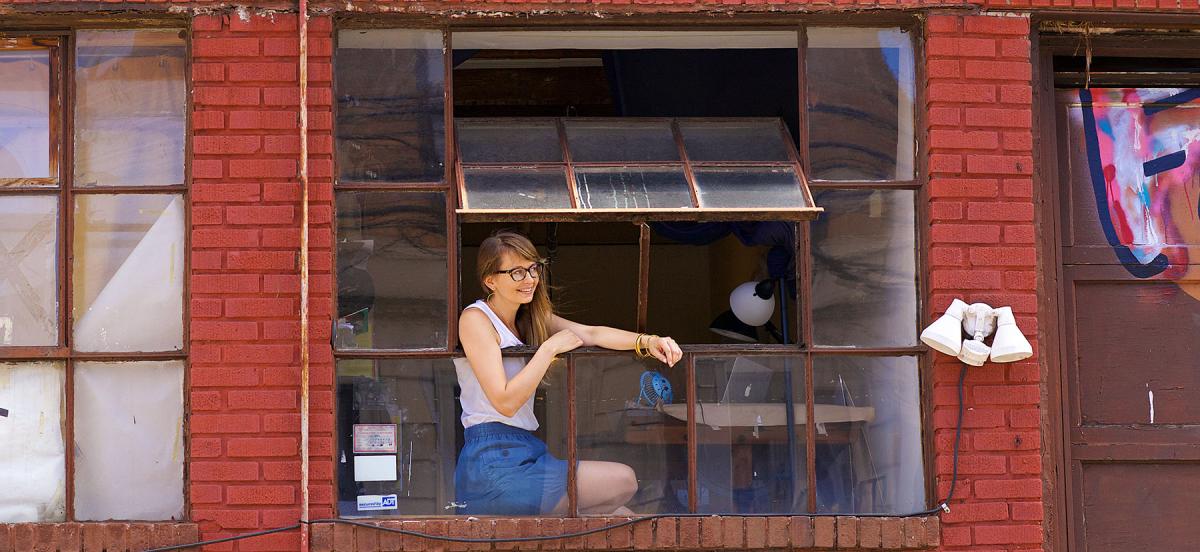Artist Christina Freeman ’05 Returns to the Site of Her Early Inspiration

Photo by Caleb Eckert '17.
Details
The Queens-based artist, who uses various visual media and performance to explore ideas of community, collaboration, and conversation in her work, is back at Haverford as a visiting assistant professor this semester.
Creative inspiration is often described as a spark, but Christina Freeman ’05 recalls one of her most inspiring moments as an artist happening in the dark. “I remember working in the darkroom and feeling like everything I was interested in, everything I cared about, could be explored through photography,” she says, recalling the epiphany that came during her sophomore year at Haverford. “I was interested in so many subjects; photography was the first thing I discovered where I didn’t feel like I was narrowing down by committing to it.”
Since that illuminating moment, Freeman, 33, has been an interdisciplinary artist, using various visual media and performance to explore ideas of community, collaboration, and conversation.
One early work, The Ring Project (2009), is an exemplar of her approach. “Dressed as a bride in search of her fiancé, I asked people on the streets of New York where I could find my soul mate,” says Freeman, who carried with her a giant sculpture of an engagement ring that she created. Behind the spontaneous conversations that she sought to spark was a cultural critique about the societal framing and invisible expectations of marriage.
Locations are important in Freeman’s work and tie into her lifelong passion for travel. A Spanish and Latin American studies major at Haverford, Freeman studied abroad in Barcelona during her junior year, and after earning an MFA at Hunter College in New York, she did an artist residency in Mexico City. She has mounted her work in Mexico, Bulgaria, and Greece—including Plums for Trash (2011–13), an “international trash exchange” that gave participants “an opportunity to consider their relationship to [the] cycle of production, consumption, and waste,” she says.
She now lives in Queens, where in August she presented Best Value Lemonade Stand (2016) at Flux Factory in Long Island City. Part of a live-stream exhibition in conjunction with Tom’s Etching Studio in London, the work featured an actual lemonade stand from which Freeman dispensed lemonade to gallery visitors. In exchange, she asked them to draw a picture of an object they owned whose symbolic, sentimental, or historical value exceeds its monetary value, and then name something that would be a fair trade for the object. Using an icon of capitalism (a child’s lemonade stand), the work opens up a discussion about value.
In addition to her artistic and curatorial practice, Freeman teaches art at Hunter and, this spring, returned to Haverford to teach color photography as a visiting assistant professor in the Department of Fine Arts. And she always keeps herself open to the next idea or encounter that will spark new and unexpected work. “Art-making is traditionally a solitary, studio-based practice,” she says. “Choosing to leave works open to audience participation or collaboration with other artists forces me to be more flexible and take risks. My general belief is that something more interesting will happen when I am open to the unexpected—more interesting than if I am in total control.”



